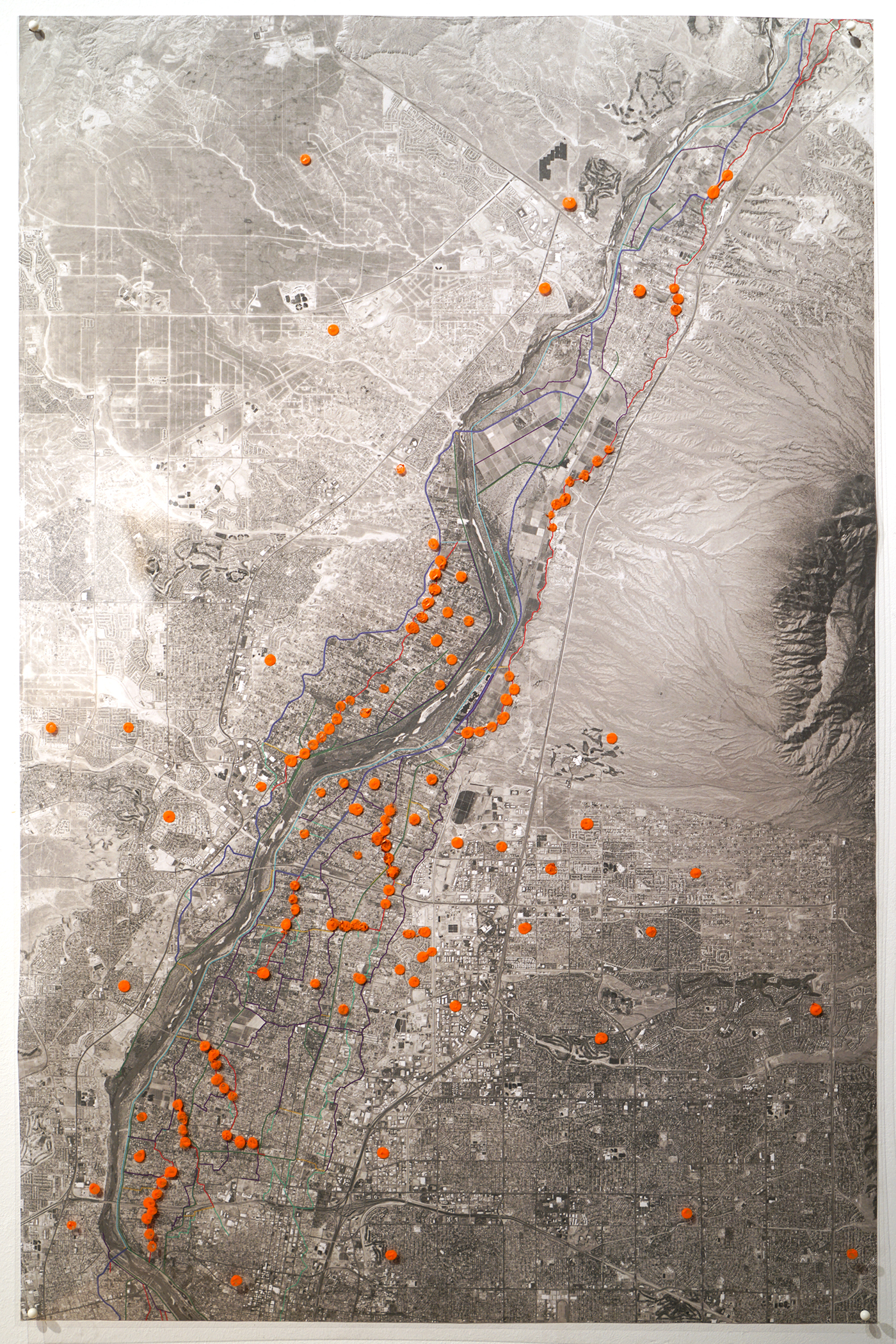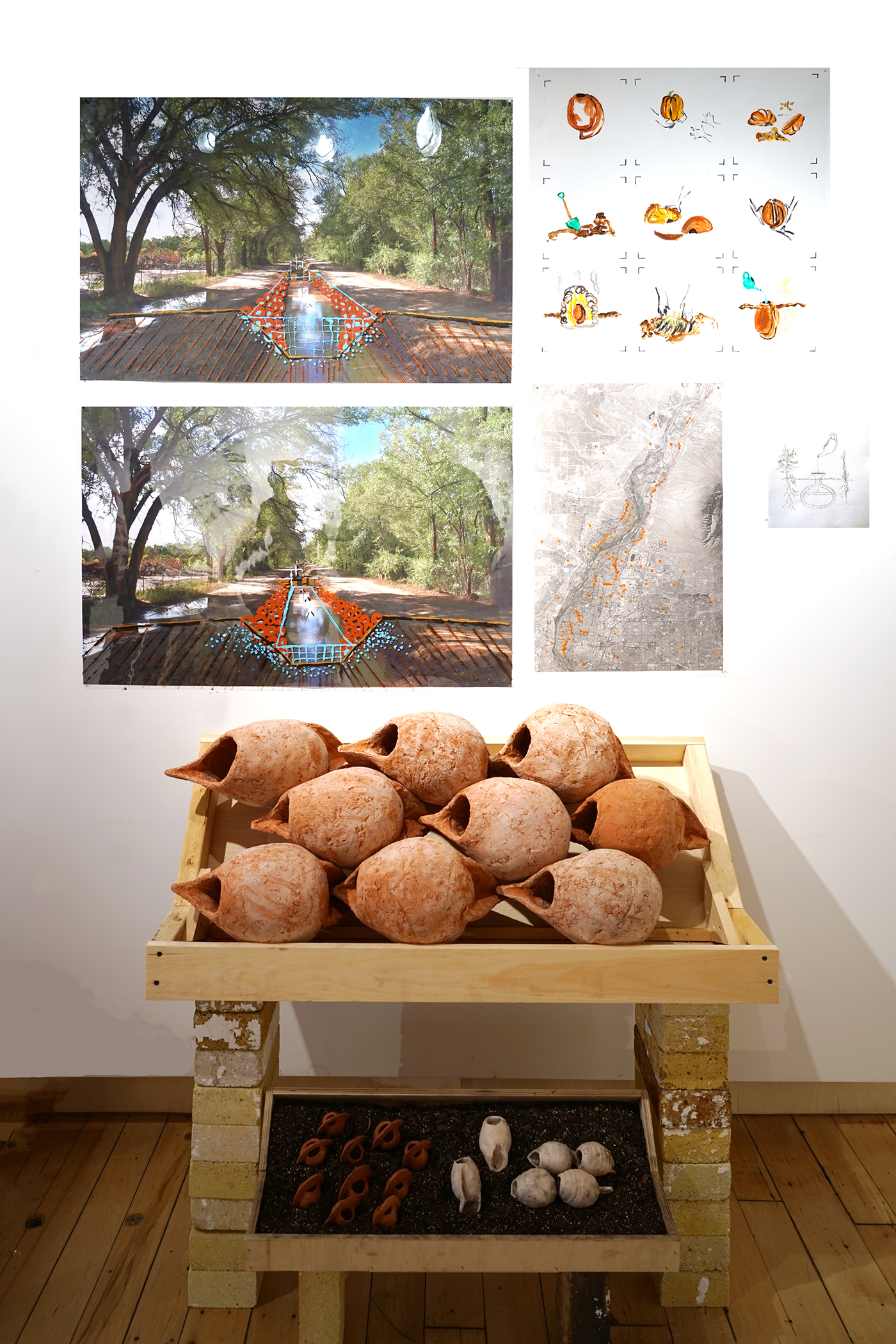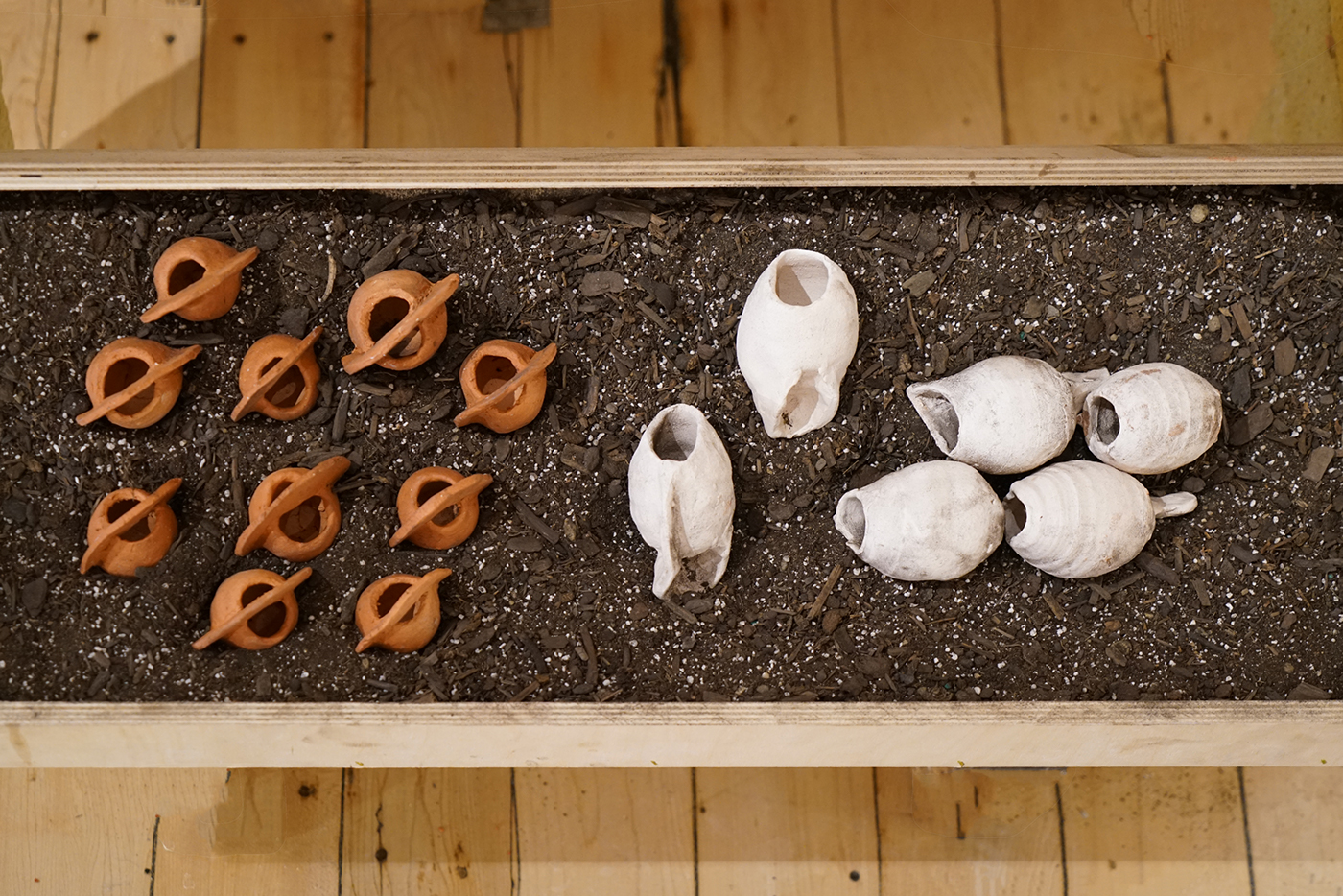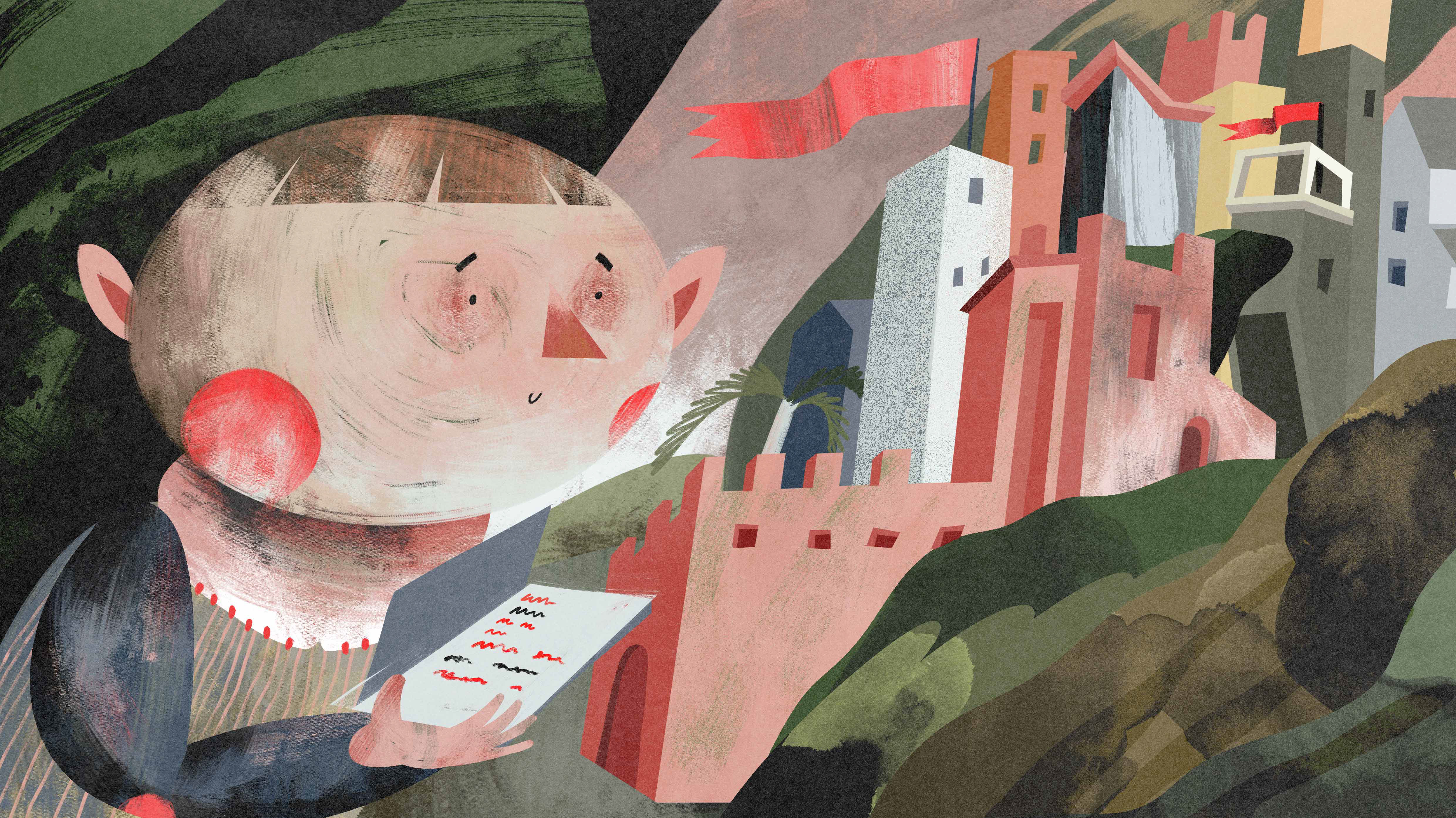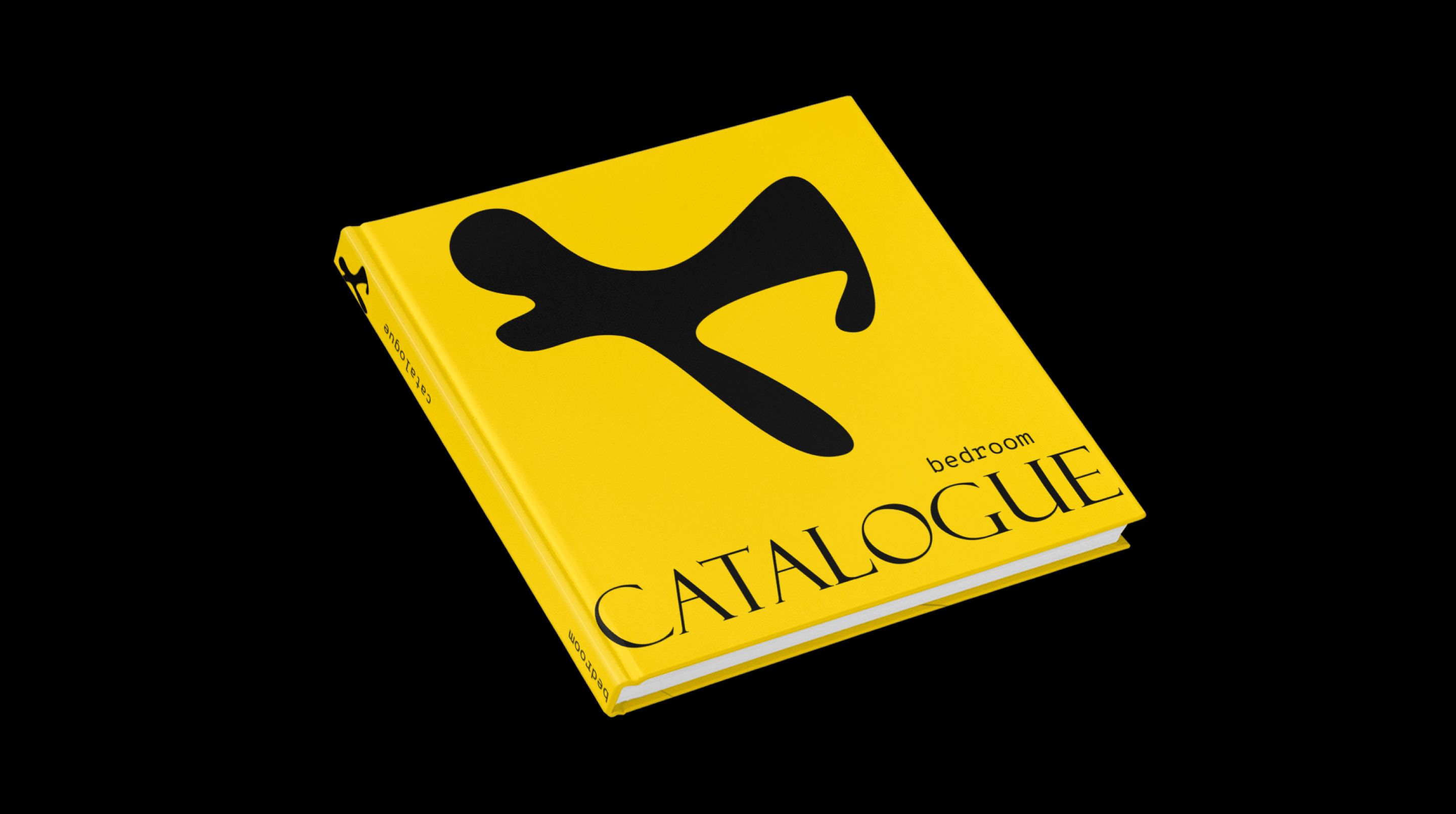

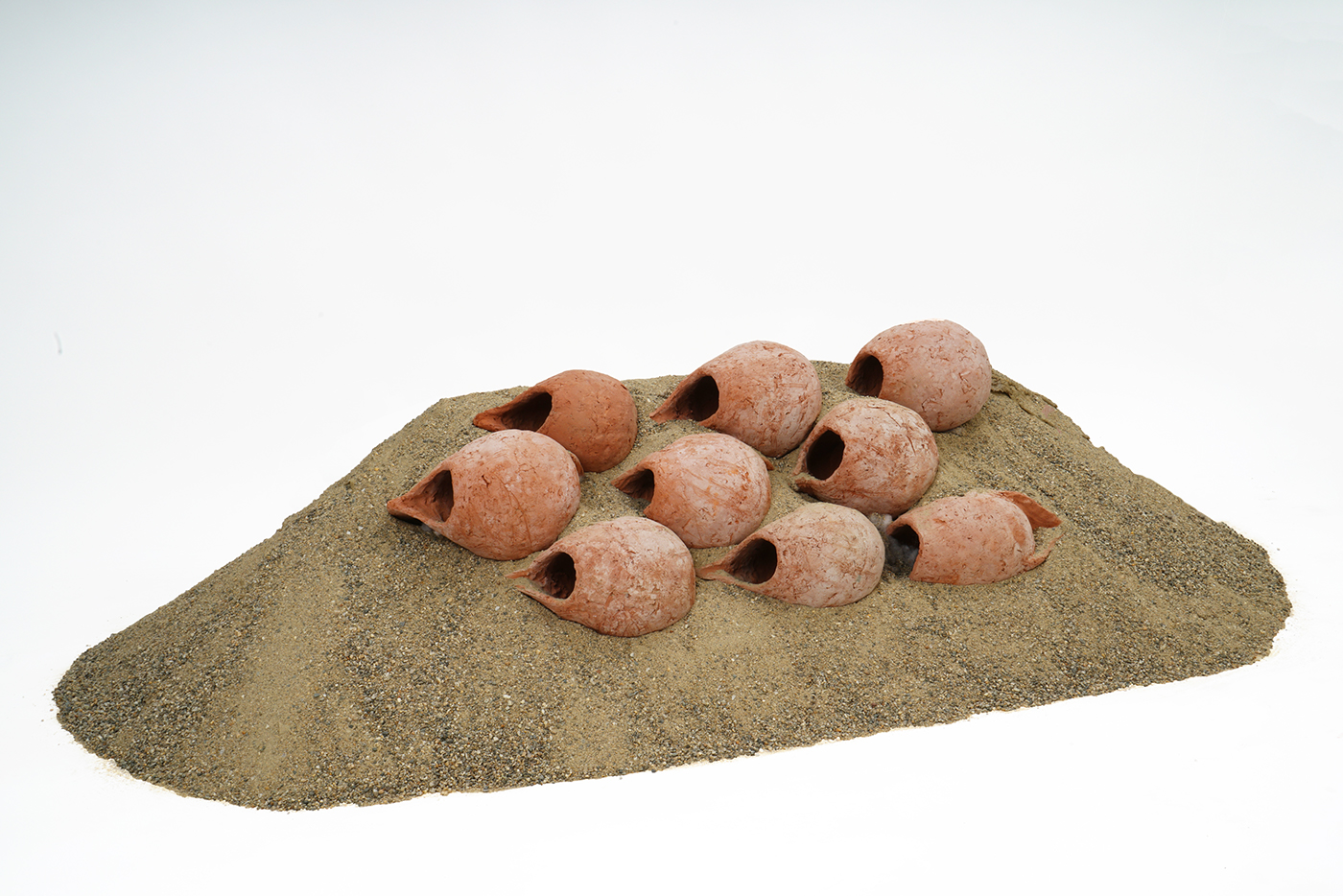
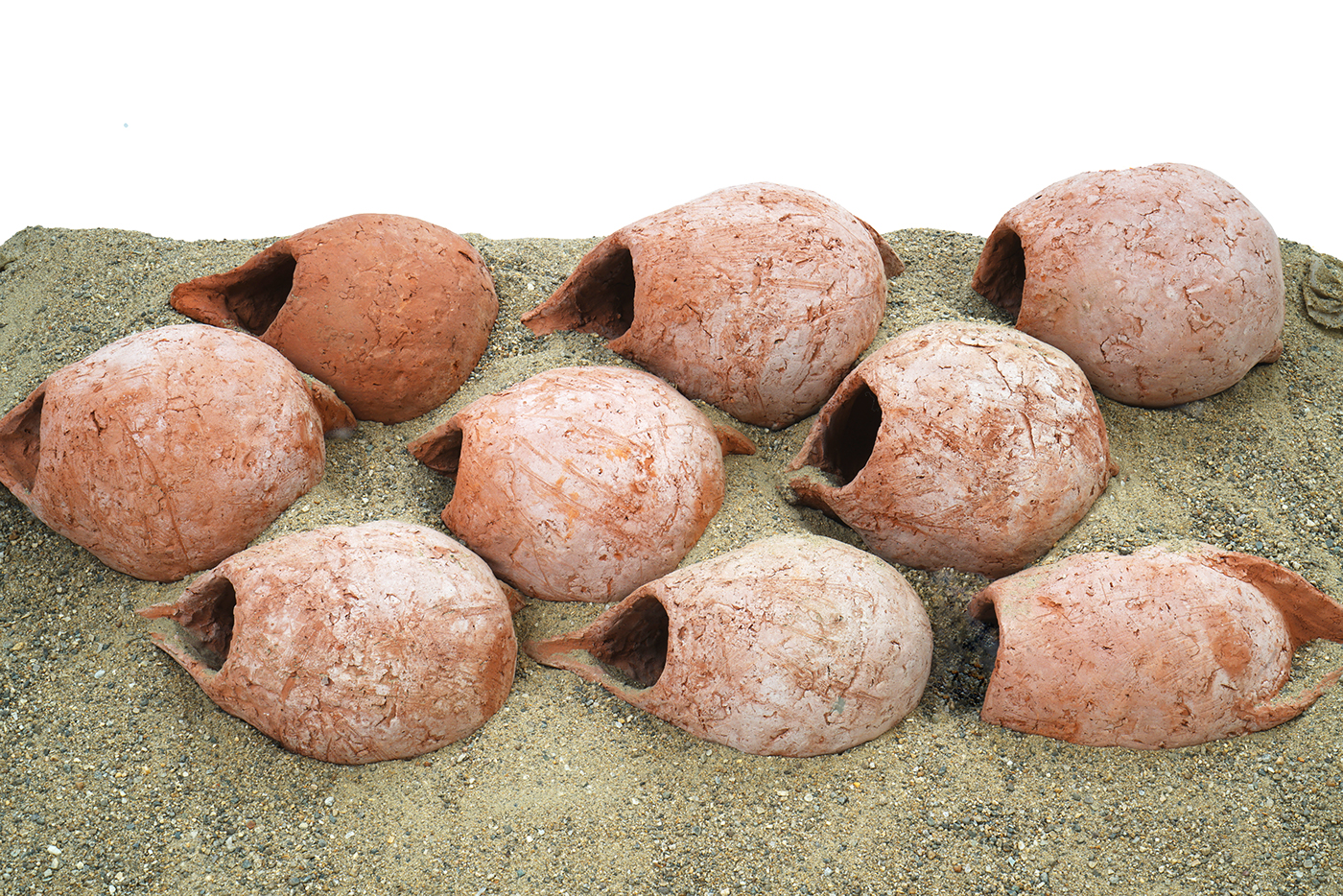
My module came out of the traditional olla vessel form.
An olla is a terracotta pot with a thin neck and a large basin.
It is buried in the ground and water is poured into it, so that the pot becomes saturated, and water percolates into the surrounding soil.
This makes effective low tech irrigation, creating a gradient of moisture.
My module takes this idea of a porous vessel and combines it with a renewable mindset.
If the issue of erosion comes from too much water at once, and the issue of bosque diminishment comes from not enough groundwater, could we use the problem to create a solution?
I imagined the olla form as a module that can trap some of that excess water, hold it for a time, and create a gradient of moisture into the surrounding plant life.
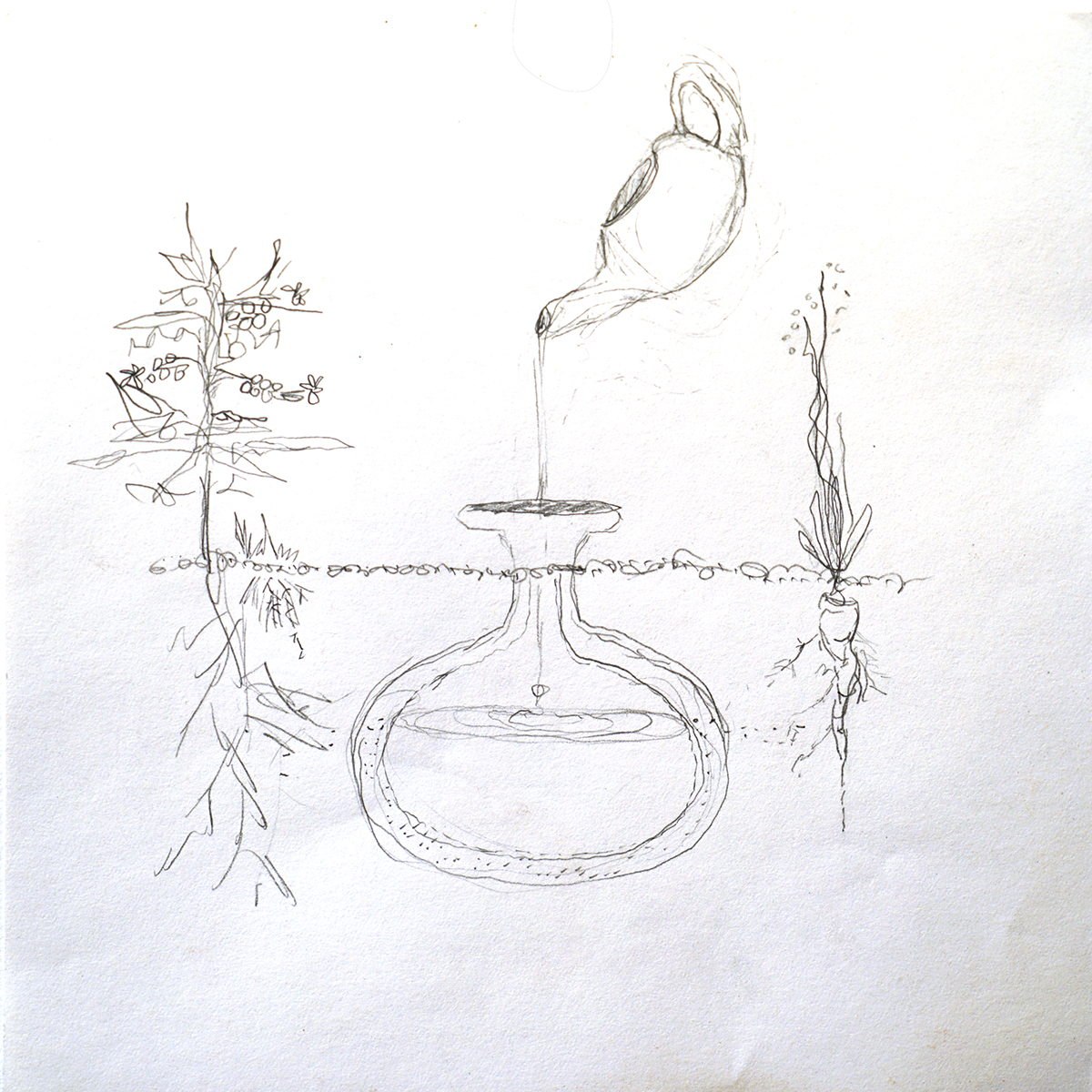
I’ve illustrated the transition between damming and regular flowing of water.
When the ditches are dammed, the water level rises nearing the top of the ditchbanks. This situation allows for the modules to fill.
When the dam is released, there is then significantly less water rushing out at once than there might be.
The modules remain full of water, allowing the water to percolate slowly into the surrounding ditchbank.
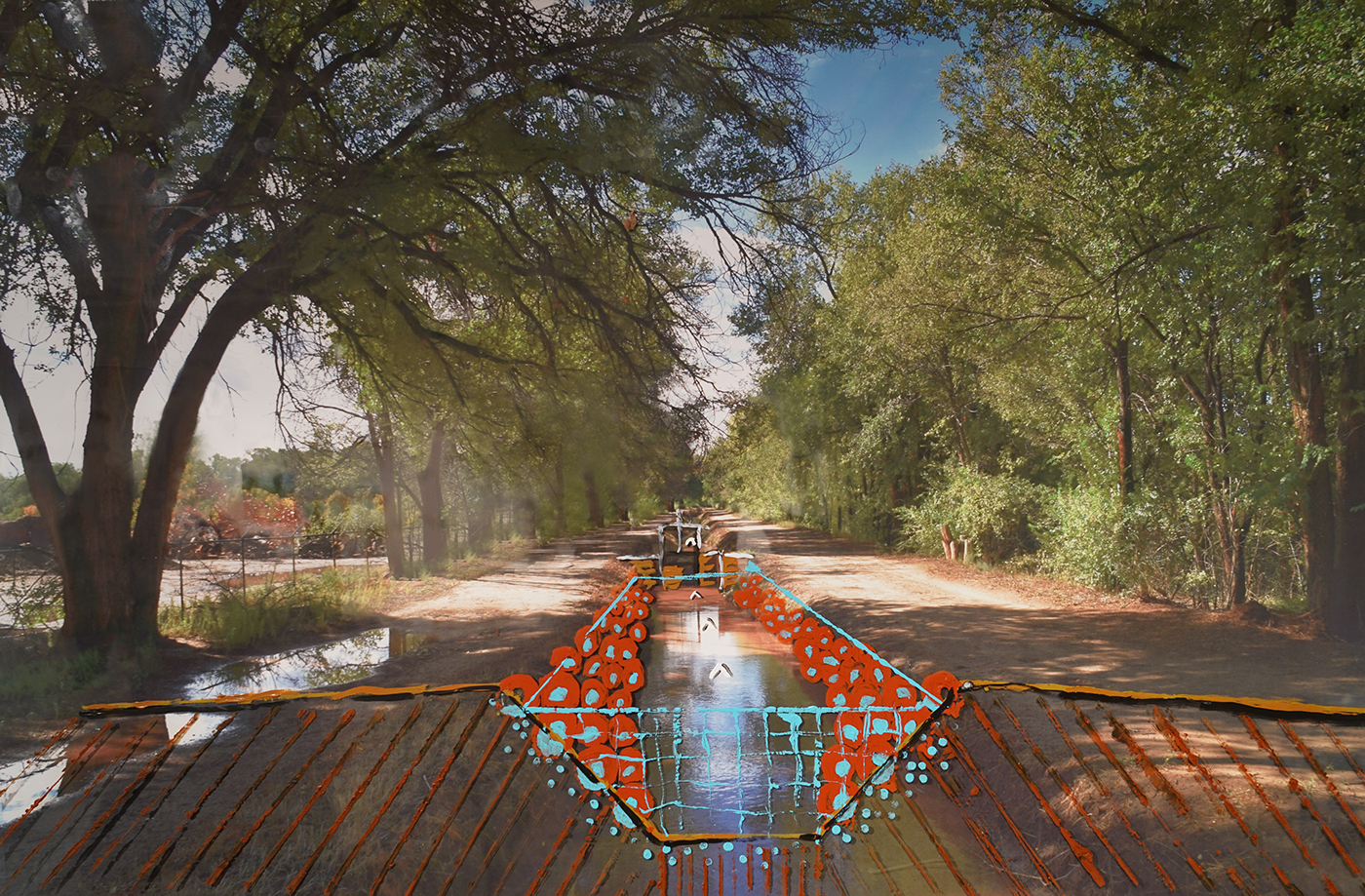
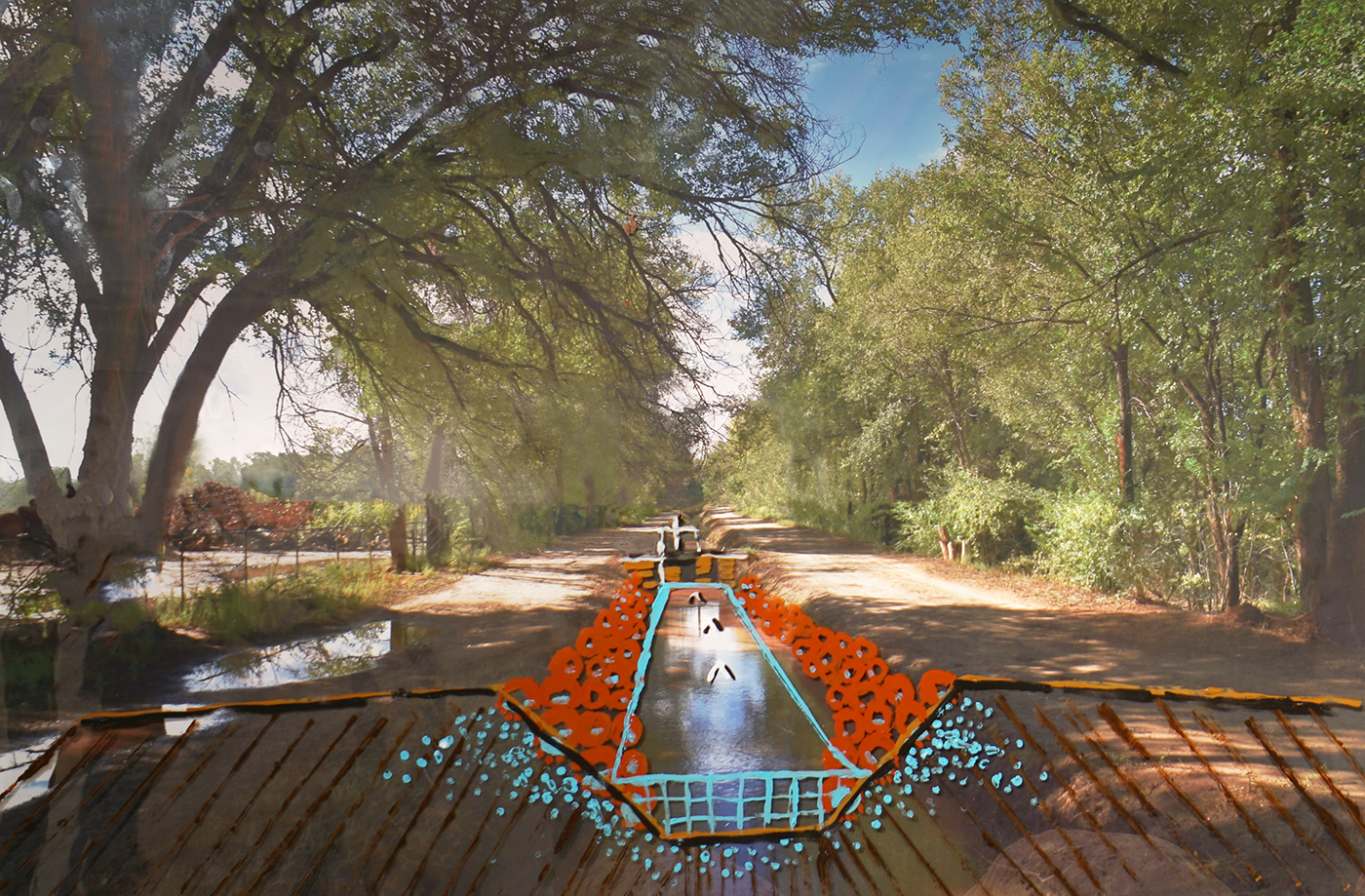
For this site specific project, I wasn’t satisfied with traditional ceramic techniques.
I focused on the materials on site and their potential as solutions.
This however eliminated the possibility of imported clay, imported molds, and outsourced labor.
This turned me towards using this project as an educational tool for both the history of ceramics in the area, and the erosion issue on the ditch banks.
Creative projects do however need room for creativity.
So, I identified that the module would need only three dictated elements - the vessel, the anchor, and the attachment point.
This means that the specifics of those elements would be up to interpretation by the classroom, youth group, or individual making modules with the project.
The local clay we found on site is plentiful, but still too short to use as you would manufactured clay.
It needs a mold to be feasibly produced.
For this I am using a pumpkin.
They are able to grow in the climate, and the size lends itself well to the module.
Using organic material means that once the mold is done being used, it can decompose leaving no waste.
This also means that the mold itself is renewable.
From one pumpkin used as a mold for many modules, many more seeds can be replanted.
Then, the module itself can be buried like an olla, irrigating the roots of that pumpkin plant, which can in turn make more modules.
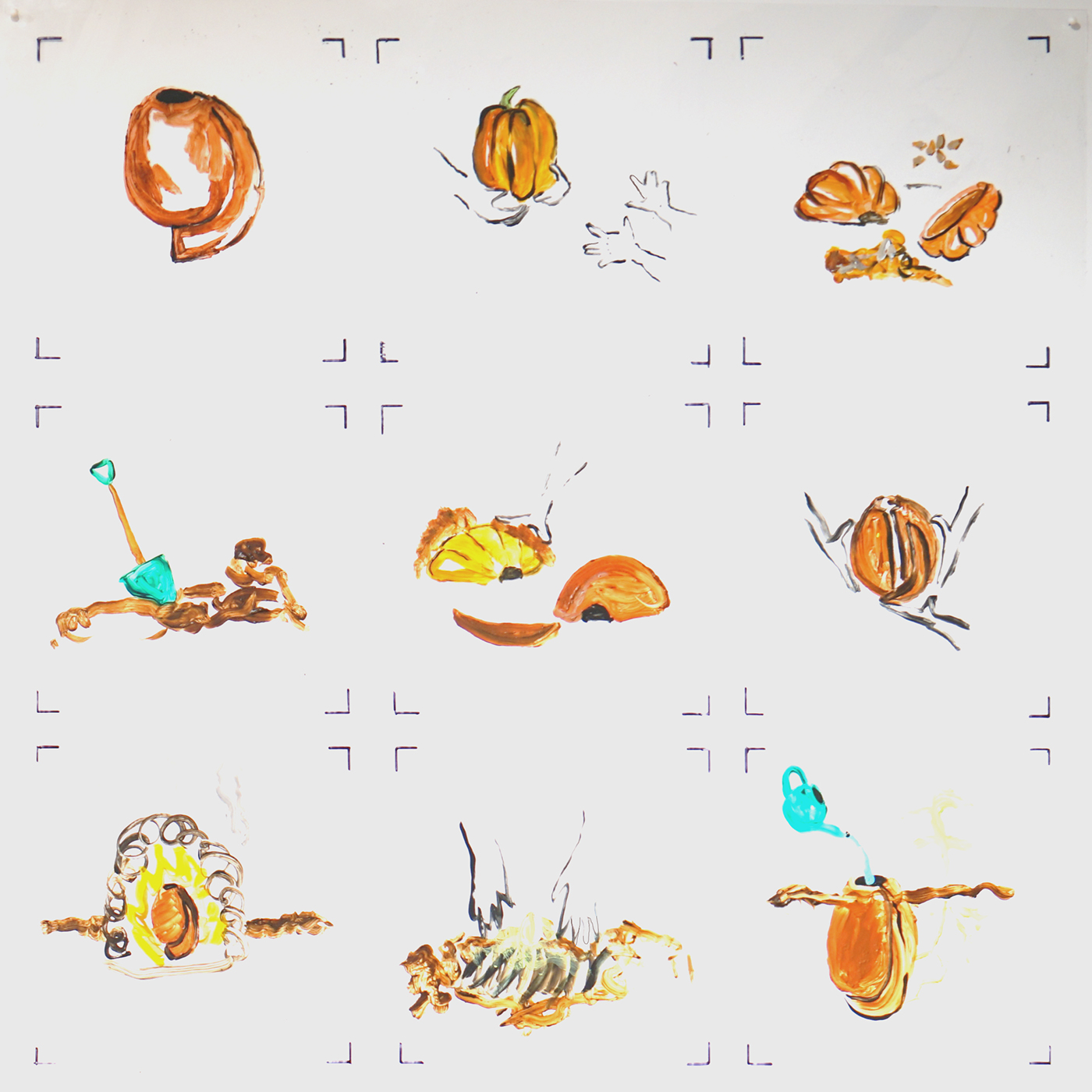
As the module starts to span greater lengths in the ditches, more people will be interested in becoming involved.
Eventually, the concentration of modules will not just grow along large stretches of the ditchbank, but
They will also percolate out into the community, creating a similar gradient of moisture, which can in turn grow more modules.
